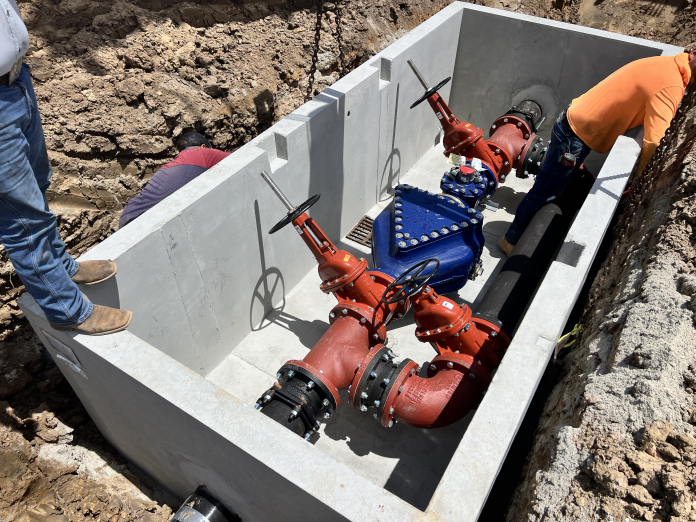Commercial water meters are used to assess and monitor the flow of water in settings like commercial, residential, industrial, or municipal buildings. Water meters are commonly located in nearly every type of building, whether it is public or private. They are built to offer versatility and control when tracking rapid or variable water usage in larger facilities. We serve a complete solution that includes all necessary internal components such as a water meter approved by the city, isolation valves, pipe stubs, an optional strainer, automatic reading technology, and bypass features.
Our water meters come with automatic reading capabilities that remove the need for manual meter checks along with advanced two-way wireless communication for real-time tracking, leak detection, and remote valve shut-off.
For details about water meter specifications that meet your local regulations, please reach out to our sales team.
How It Operates
We gather various kinds of water meters that all serve the same purpose: to gauge the volume of water used. Typically, water meters have a strainer placed upstream to guard against debris and decrease turbulence. There are isolation gate valves located both upstream and downstream of the meter. Together with a bypass, this setup enables the meter to be calibrated and maintained in the future without disrupting service for the user.
Water is gauged using one of several methods: a physical displacement meter, a turbine, a propeller, magnetic coils, ultrasonic sound waves, or a mix of these types. In a positive displacement water meter, water volume is measured by physically pushing a measured amount of water through the meter; the turbine meter uses a rotor and magnet that generates electric pulses to send information to the register; the propeller type relies on pulses created by a magnet that spins with the propeller; the magnetic meter employs two sets of coils, one set receiving an electrical charge and the other detecting the magnetic field produced by the current when water flows through to generate a voltage in proportion to the water’s speed; lastly, the ultrasonic meter uses focused sound waves to precisely measure the speed of flowing water.
Most water meter units are installed below ground and housed in a vault enclosure. This vault is made of precast concrete and includes an access hatch for reaching the meter and its components.


